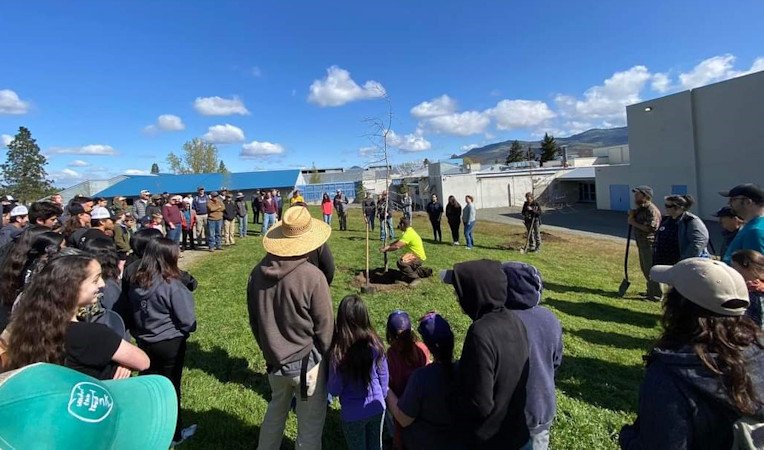Town of Talent rises from wildfire’s ashes to become Oregon’s Tree City of the Year

TALENT, Ore. (KTVZ) – The Oregon Department of Forestry has selected the southern Oregon town of Talent, which has battled back from a 2020 wildfire's devastation, to be Oregon’s Tree City of the Year. Only one community is chosen each year from across the state. Cottage Grove was last year’s honoree.
To be eligible for Tree City of the Year honors, a community must be a Tree City USA. To become a Tree City USA, communities must meet requirements of the national Arbor Day Foundation for having basic tree-care policies and management in place.
Talent has held that status for 23 years. Last year was also the fourth time the city earned a Growth Award for significant improvements to its urban forestry program.
A fast-moving wildfire in 2020 destroyed about 40 percent of the city, leaving thousands without homes and killing a heart-breaking number of its trees.
Before the fire, Talent did not have an accurate inventory of its urban trees. With help from ODF urban forestry grants, Talent has gained access to inventory software from PlanIt Geo (Treeplotter).
The city inventoried 1,500 street and park trees throughout the community – about one-third of the estimated public trees in Talent. From this data, Talent is able to figure out the size, diversity, ecosystem services, and economic loss resulting from the destroyed portion of its urban forest.
“After being devastated by the 2020 wildfire, Talent has rallied as a community, becoming very invested and committed to their urban forest. In the face of traumatic and devastating loss, they still managed to outscore all of our other growth award applicants,” said ODF Urban and Community Assistance Forester Brittany Oxford.
“Most notably, they have been mapping their canopy with an equity-informed focus guiding their reforestation efforts. The city is working hard to ensure the historically underserved in Talent are the starting point from which they begin to reforest and recover.”
“This recognition was earned by the hard work of so many dedicated people in Talent, from elected city commissioners, Tree Board, volunteers and city staff, such as our new Hazard Mitigation Coordinator Mike Oxendine,” said Talent Mayor Darby Ayres-Flood. “It shows the resilience and determination of our town to come back even better than we were before the wildfire.”
A certified arborist, Oxendine has been helping Talent with its citywide hazard tree assessment and removal. He has also been staff liaison to the Talent Urban Forestry Committee and is project lead on drafting a master plan for the City’s urban forest. This is in addition to seeking out and overseeing grant funding for hazard mitigation and canopy restoration, including tree plantings.
“Post-fire grants have allowed us to hire a GIS professional contractor Nikki Hart-Brinkley, who is the owner and principal of Green Top Planning, Development, and Research,” said Oxendine.
He said Hart-Brinkley has been working on a series of maps detailing canopy coverage before and after the wildfire of 2020.
“The maps are the basis for our Urban Tree Canopy Assessment. They show that within Talent city limits (total 851 acres) before the wildfire we had 142 acres of canopy coverage and post-fire we have 104 acres. That’s a drop in tree canopy coverage from 16.7% to 12.3%. That’s roughly a loss of one tree in four,” explained Oxendine.
“This canopy assessment is also informing our decisions about achieving equity in our reforesting efforts. We are analyzing heat islands and overlaying that data layer with socioeconomic data to show where our heat islands intersect with historically underserved populations. We can see where there is lots of asphalt and concrete and where shade trees are most needed,” added Oxendine.
Oxford said Talent is also adding to knowledge about tree performance in Southern Oregon conditions, reporting data on 10 common urban trees’ growth rates in their community.